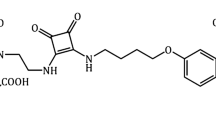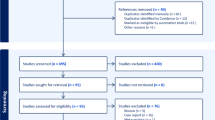Abstract
Purpose
Approximately 5% of differentiated thyroid cancers lose the ability to uptake iodine, leading to limited treatment options and poor prognosis due to invasion and distant metastasis. PSMA imaging probes have been proposed as a potential diagnostic and therapeutic tool for iodine-refractory thyroid cancer. However, there are limited reports and significant heterogeneity in patient selection, warranting further exploration of the application value of PSMA in thyroid cancer.
Methods
We performed Western Blot, PCR, and [68Ga]Ga-PSMA uptake experiments on cell lines and conducted in vivo small animal imaging. Clinical and radiological results of included differentiated thyroid cancer patients were collected. (Trial registration number: 2021-669, Trial registration date: December 30, 2021).
Results
PSMA expression levels were significantly higher in poorly differentiated thyroid cancer (7.86 ± 1.90 vs. 1.00 ± 0, P < 0.01; 7.86 ± 1.90 vs. 0.03 ± 0.02, P < 0.01), but [68Ga]Ga-PSMA imaging correlated with tumor burden, such as 18F-FDG (8.08 ± 7.74 and 5.67 ± 4.23, P = 0.01) and Tg levels (307.1 ± 183.4 vs. 118.0 ± 116.1, P = 0.002).
Conclusion
Our results showed that PSMA expression increased with the decrease of thyroid cancer differentiation. However, the level of [68Ga]Ga-PSMA uptake in thyroid cancer patients was not significantly associated with the degree of thyroid cancer differentiation, but also with the metabolism and burden of tumors such as 2-[18F]FDG and Tg levels. These findings provide additional clinical significance and application value for PSMA in thyroid cancer.




Similar content being viewed by others
References
Y. Mao, M. **ng, Recent incidences and differential trends of thyroid cancer in the USA. Endocr. Relat. Cancer 23(4), 313–322 (2016). https://doi.org/10.1530/ERC-15-0445.
H. Lim, S.S. Devesa, J.A. Sosa, D. Check, C.M. Kitahara, Trends in thyroid cancer incidence and mortality in the United States, 1974–2013. JAMA 317(13), 1338–1348 (2017). https://doi.org/10.1001/jama.2017.2719.
I.J. Nixon, M.M. Whitcher, F.L. Palmer, R.M. Tuttle, A.R. Shaha, J.P. Shah, S.G. Patel, I. Ganly, The impact of distant metastases at presentation on prognosis in patients with differentiated carcinoma of the thyroid gland. Thyroid 22(9), 884–889 (2012). https://doi.org/10.1089/thy.2011.0535.
S. Narayanan, A.D. Colevas, Current standards in treatment of radioiodine refractory thyroid cancer. Curr. Treat. Options Oncol. 17(6), 30 (2016). https://doi.org/10.1007/s11864-016-0404-6.
S.F. Dinneen, M.J. Valimaki, E.J. Bergstralh, J.R. Goellner, C.A. Gorman, I.D. Hay, Distant metastases in papillary thyroid carcinoma: 100 cases observed at one institution during 5 decades. J. Clin. Endocrinol. Metab. 80(7), 2041–2045 (1995). https://doi.org/10.1210/jcem.80.7.7608252.
L. Fugazzola, R. Elisei, D. Fuhrer, B. Jarzab, S. Leboulleux, K. Newbold, J. Smit, 2019 European Thyroid Association Guidelines for the Treatment and Follow-Up of Advanced Radioiodine-Refractory Thyroid Cancer. Eur. Thyroid J. 8(5), 227–245 (2019). https://doi.org/10.1159/000502229.
D.S. O’Keefe, S.L. Su, D.J. Bacich, Y. Horiguchi, Y. Luo, C.T. Powell, D. Zandvliet, P.J. Russell, P.L. Molloy, N.J. Nowak, T.B. Shows, C. Mullins, R.A. Vonder Haar, W.R. Fair, W.D. Heston, Map**, genomic organization and promoter analysis of the human prostate-specific membrane antigen gene. Biochim. Biophys. Acta 1443(1–2), 113–127 (1998). https://doi.org/10.1016/s0167-4781(98)00200-0.
R.S. Israeli, C.T. Powell, J.G. Corr, W.R. Fair, W.D. Heston, Expression of the prostate-specific membrane antigen. Cancer Res. 54(7), 1807–1811 (1994).
AG. Wernicke, S. Kim, H. Liu, NH. Bander, EC. Pirog, Prostate-specific Membrane Antigen (PSMA) Expression in the Neovasculature of Gynecologic Malignancies: Implications for PSMA-targeted Therapy. Appl Immunohistochem Mol Morphol. 25(4), 271–276 (2017). https://doi.org/10.1097/PAI.0000000000000297
M. Luster, A. Pfestroff, FA. Verburg, Recent advances in nuclear medicine in endocrine oncology. Curr Opin Oncol. 29(1), 1–6 (2017). https://doi.org/10.1097/CCO.0000000000000338
P. Mhawech-Fauceglia, S. Zhang, L. Terracciano, G. Sauter, A. Chadhuri, FR. Herrmann, R. Penetrante, Prostate-specific membrane antigen (PSMA) protein expression in normal and neoplastic tissues and its sensitivity and specificity in prostate adenocarcinoma: an immunohistochemical study using mutiple tumour tissue microarray technique. Histopathology 50(4), 472–83 (2007). https://doi.org/10.1111/j.1365-2559.2007.02635.x
A. Bychkov, U. Vutrapongwatana, S. Tepmongkol, S. Keelawat, PSMA expression by microvasculature of thyroid tumors-Potential implications for PSMA theranostics. Sci Rep. 7(1), 5202 (2017). https://doi.org/10.1038/s41598-017-05481-z
H.D. Zacho, J.B. Nielsen, K. Dettmann, U. Haberkorn, L.J. Petersen, Incidental detection of thyroid metastases from renal cell carcinoma using 68Ga-PSMA PET/CT to assess prostate cancer recurrence. Clin. Nucl. Med. 42(3), 221–222 (2017). https://doi.org/10.1097/RLU.0000000000001522.
F.A. Verburg, T. Krohn, A. Heinzel, F.M. Mottaghy, F.F. Behrendt, First evidence of PSMA expression in differentiated thyroid cancer using [68Ga]PSMA-HBED-CC PET/CT. Eur. J. Nucl. Med. Mol. Imaging 42(10), 1622–1623 (2015). https://doi.org/10.1007/s00259-015-3065-y.
L.H. de Vries, L. Lodewijk, A.J.A.T. Braat, G.C. Krijger, G.D. Valk, M.G.E.H. Lam, I.H.M. Borel Rinkes, M.R. Vriens, B. de Keizer, 68Ga-PSMA PET/CT in radioactive iodine-refractory differentiated thyroid cancer and first treatment results with 177Lu-PSMA-617. EJNMMI Res. 10(1), 18 (2020). https://doi.org/10.1186/s13550-020-0610-x.
A. Afshar-Oromieh, J.W. Babich, C. Kratochwil, F.L. Giesel, M. Eisenhut, K. Kopka, U. Haberkorn, The rise of PSMA ligands for diagnosis and therapy of prostate cancer. J. Nucl. Med. 57(Suppl 3), 79S–89S (2016). https://doi.org/10.2967/jnumed.115.170720.
E. Arslan, N. Ergül, E. Beyhan, Ö. Erol Fenercioglu, R. Sahin, M. Cin, S. Battal Havare, F.D. Can Trabulus, Ö. Mermut, S. Akbas, T. Fikret Çermik, The roles of 68 Ga-PSMA PET/CT and 18 F-FDG PET/CT imaging in patients with triple-negative breast cancer and the association of tissue PSMA and claudin 1, 4, and 7 levels with PET findings. Nucl. Med. Commun. 44(4), 284–290 (2023). https://doi.org/10.1097/MNM.0000000000001663.
A. Rizzo, M. Racca, S. Dall’Armellina, R.C. Delgado Bolton, D. Albano, F. Dondi, F. Bertagna, S. Annunziata, G. Treglia, Potential role of PSMA-targeted PET in thyroid malignant disease: a systematic review. Diagnostics 13(3), 564 (2023). https://doi.org/10.3390/diagnostics13030564.
A. Miyauchi, T. Kudo, A. Miya, K. Kobayashi, Y. Ito, Y. Takamura, T. Higashiyama, M. Fukushima, M. Kihara, H. Inoue, C. Tomoda, T. Yabuta, H. Masuoka, Prognostic impact of serum thyroglobulin doubling-time under thyrotropin suppression in patients with papillary thyroid carcinoma who underwent total thyroidectomy. Thyroid 21(7), 707–716 (2011). https://doi.org/10.1089/thy.2010.0355.
D.P. Nguyen, P.L. **ong, H. Liu, S. Pan, W. Leconet, V. Navarro, M. Guo, J. Moy, S. Kim, M.K. Ramirez-Fort, J.S. Batra, N.H. Bander, Induction of PSMA and internalization of an Anti-PSMA mAb in the vascular compartment. Mol. Cancer Res. 14(11), 1045–1053 (2016). https://doi.org/10.1158/1541-7786.MCR-16-0193.
M. Moore, S. Panjwani, R. Mathew, M. Crowley, Y.F. Liu, A. Aronova, B. Finnerty, R. Zarnegar, T.J. Fahey 3rd, T. Scognamiglio, Well-differentiated thyroid cancer neovasculature expresses prostate-specific membrane antigen-a possible novel therapeutic target. Endocr. Pathol. 28(4), 339–344 (2017). https://doi.org/10.1007/s12022-017-9500-9.
B. Heitkötter, K. Steinestel, M. Trautmann, I. Grünewald, P. Barth, H. Gevensleben, M. Bögemann, E. Wardelmann, W. Hartmann, K. Rahbar, S. Huss, Neovascular PSMA expression is a common feature in malignant neoplasms of the thyroid. Oncotarget 9(11), 9867–9874 (2018). https://doi.org/10.18632/oncotarget.23984.
A. Ghosh, W.D. Heston, Tumor target prostate specific membrane antigen (PSMA) and its regulation in prostate cancer. J. Cell Biochem. 91(3), 528–539 (2004). https://doi.org/10.1002/jcb.10661.
R.E. Conway, N. Petrovic, Z. Li, W. Heston, D. Wu, L.H. Shapiro, Prostate-specific membrane antigen regulates angiogenesis by modulating integrin signal transduction. Mol. Cell Biol. 26(14), 5310–5324 (2006). https://doi.org/10.1128/MCB.00084-06.
S. Sager, B. Vatankulu, L. Uslu, K. Sönmezoglu, Incidental detection of follicular thyroid carcinoma in 68Ga-PSMA PET/CT imaging. J. Nucl. Med. Technol. 44(3), 199–200 (2016). https://doi.org/10.2967/jnmt.115.171660.
S.K. Taywade, N.A. Damle, C. Bal, PSMA Expression in papillary thyroid carcinoma: opening a new horizon in management of thyroid cancer? Clin. Nucl. Med. 41(5), e263–e265 (2016). https://doi.org/10.1097/RLU.0000000000001148.
M. Sathekge, T. Lengana, M. Modiselle, M. Vorster, J. Zeevaart, A. Maes, T. Ebenhan, C. Van de Wiele, 68Ga-PSMA-HBED-CC PET imaging in breast carcinoma patients. Eur. J. Nucl. Med. Mol. Imaging 44(4), 689–694 (2017). https://doi.org/10.1007/s00259-016-3563-6.
S.S. Chang, V.E. Reuter, W.D. Heston, N.H. Bander, L.S. Grauer, P.B. Gaudin, Five different anti-prostate-specific membrane antigen (PSMA) antibodies confirm PSMA expression in tumor-associated neovasculature. Cancer Res. 59(13), 3192–3198 (1999).
B.R. Haugen, E.K. Alexander, K.C. Bible, G.M. Doherty, S.J. Mandel, Y.E. Nikiforov, F. Pacini, G.W. Randolph, A.M. Sawka, M. Schlumberger, K.G. Schuff, S.I. Sherman, J.A. Sosa, D.L. Steward, R.M. Tuttle, L. Wartofsky, 2015 American Thyroid Association management guidelines for adult patients with thyroid nodules and differentiated thyroid cancer: the American Thyroid Association guidelines task force on thyroid nodules and differentiated thyroid cancer. Thyroid 26(1), 1–133 (2016). https://doi.org/10.1089/thy.2015.0020.
J.D. Lin, Thyroglobulin and human thyroid cancer. Clin. Chim. Acta 388(1–2), 15–21 (2008). https://doi.org/10.1016/j.cca.2007.11.002.
L. Wartofsky, Using baseline and recombinant human TSH-stimulated Tg measurements to manage thyroid cancer without diagnostic (131)I scanning. J. Clin. Endocrinol. Metab. 87(4), 1486–1489 (2002). https://doi.org/10.1210/jcem.87.4.8445.
T. Ito, H. Suzuki, Y. Sakairi, H. Wada, T. Nakajima, I. Yoshino, 18F-FDG-PET/CT predicts grade of malignancy and invasive potential of thymic epithelial tumors. Gen. Thorac. Cardiovasc Surg. 69(2), 274–281 (2021). https://doi.org/10.1007/s11748-020-01439-7.
C.L. Grant, L.A. Caromile, V. Ho, K. Durrani, M.M. Rahman, K.P. Claffey, G.H. Fong, L.H. Shapiro, Prostate specific membrane antigen (PSMA) regulates angiogenesis independently of VEGF during ocular neovascularization. PLoS One 7(7), e41285 (2012). https://doi.org/10.1371/journal.pone.0041285.
Y.J. Ryu, S.Y. Lim, Y.M. Na, M.H. Park, S.Y. Kwon, J.S. Lee, Prostate-specific membrane antigen expression predicts recurrence of papillary thyroid carcinoma after total thyroidectomy. BMC Cancer 22(1), 1278 (2022). https://doi.org/10.1186/s12885-022-10375-z.
M. Sollini, L. di Tommaso, M. Kirienko, C. Piombo, M. Erreni, A.G. Lania, P.A. Erba, L. Antunovic, A. Chiti, PSMA expression level predicts differentiated thyroid cancer aggressiveness and patient outcome. EJNMMI Res. 9(1), 93 (2019). https://doi.org/10.1186/s13550-019-0559-9.
Funding
This work was supported by the National Natural Science Foundation of China (Project No.82102093), the Natural Science Foundation of Chongqing Municipality (Project No. cstc2020jcyj-msxmX0713), and the scientific research project of Chongqing Medical University (Project No.11).
Author information
Authors and Affiliations
Contributions
All authors contributed to the study’s conception and design. Material preparation, data collection, and analysis were performed by Y.Y.F., Y.R.S., Z. X., W.B.L. and L.X. The first draft of the manuscript was written by Y.Y.F. and all authors commented on previous versions of the manuscript. All authors read and approved the final manuscript.
Corresponding authors
Ethics declarations
Conflict of interest
The authors declare no competing interests.
Consent to publish
Informed consent was obtained from all individual participants included in the study
Consent to participate
The authors affirm that human research participants provided informed consent for publication of the images in Figures.
Additional information
Publisher’s note Springer Nature remains neutral with regard to jurisdictional claims in published maps and institutional affiliations.
Supplementary information
Rights and permissions
Springer Nature or its licensor (e.g. a society or other partner) holds exclusive rights to this article under a publishing agreement with the author(s) or other rightsholder(s); author self-archiving of the accepted manuscript version of this article is solely governed by the terms of such publishing agreement and applicable law.
About this article
Cite this article
Feng, Y.Y., Shi, Y.R., **a, Z. et al. The clinical signification and application value of [68Ga]Ga-PSMA imaging in thyroid malignancy. Endocrine 84, 598–606 (2024). https://doi.org/10.1007/s12020-023-03599-x
Received:
Accepted:
Published:
Issue Date:
DOI: https://doi.org/10.1007/s12020-023-03599-x




